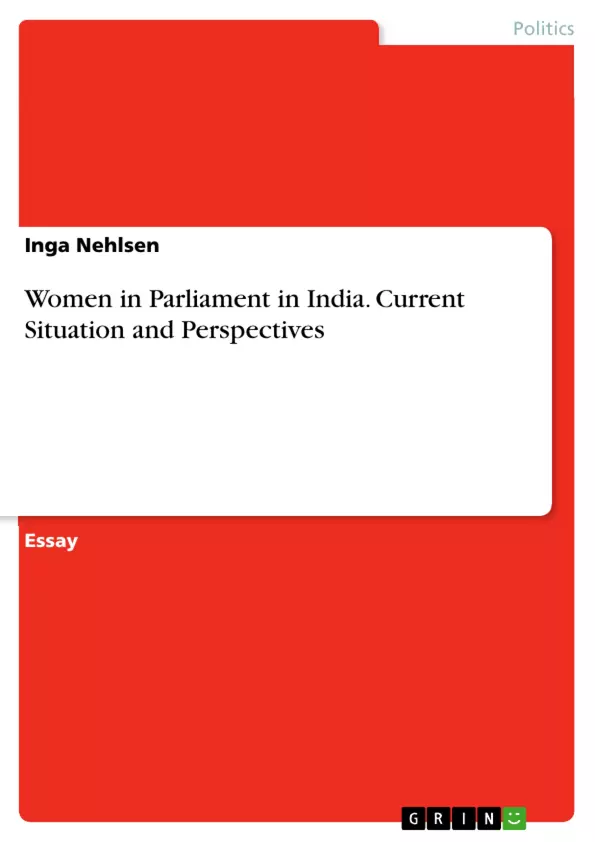India is a constitutional democracy with a bicameral parliament that consist of an Upper House (Council of States or Rajya Sabha) and a Lower House, while the Lower House is more powerful and thus more important for the purpose of this paper.
It consists of 545 members, who, with the exception of two members who are appointed by the president are elected by popular vote. This paper deals with the situation of women in parliament, i.e. in the Lower House. Therefore the words “parliament” and “Lower House” will be used as synonyms for the purpose of the paper.
Inhaltsverzeichnis (Table of Contents)
- Introduction - Basic Information
- The Situation of Women in the Indian Parliament
- Reasons
- Attempts to increase the Percentage of Women
- Do Women in Parliament make a Difference and do or should they represent Women in general?
Zielsetzung und Themenschwerpunkte (Objectives and Key Themes)
This paper analyzes the situation of women in the Indian Parliament, specifically the Lower House, and explores the reasons behind the relatively low percentage of women in this legislative body. It examines the historical trends in female representation, explores the factors contributing to this representation, and investigates the effectiveness of efforts to increase the number of women in parliament.
- The representation of women in the Indian Parliament
- Factors influencing women's participation in politics in India
- The impact of electoral systems on women's representation
- The role of political parties and women's organizations in promoting women's political participation
- The effectiveness of initiatives aimed at increasing women's representation in parliament
Zusammenfassung der Kapitel (Chapter Summaries)
- Introduction - Basic Information: Provides background information on the structure of the Indian Parliament, specifically focusing on the Lower House (Lok Sabha) and its significance in the political system.
- The Situation of Women in the Indian Parliament: Presents statistical data on the representation of women in the Indian Parliament over the past 15 years, highlighting the trends and comparing them to international averages.
- Reasons: Explores the factors contributing to the relatively low percentage of women in the Indian Parliament, including the influence of electoral systems, societal norms, and the political landscape.
- Attempts to increase the Percentage of Women: Discusses initiatives undertaken to increase women's representation in parliament, such as the proposed bill reserving seats for women and the collaboration between women's movements and political parties.
Schlüsselwörter (Keywords)
The primary keywords and focus topics of this paper include women's representation, Indian Parliament, political participation, electoral systems, gender hierarchy, political parties, women's movements, and societal norms.
- Quote paper
- Inga Nehlsen (Author), 2011, Women in Parliament in India. Current Situation and Perspectives, Munich, GRIN Verlag, https://www.grin.com/document/303447



